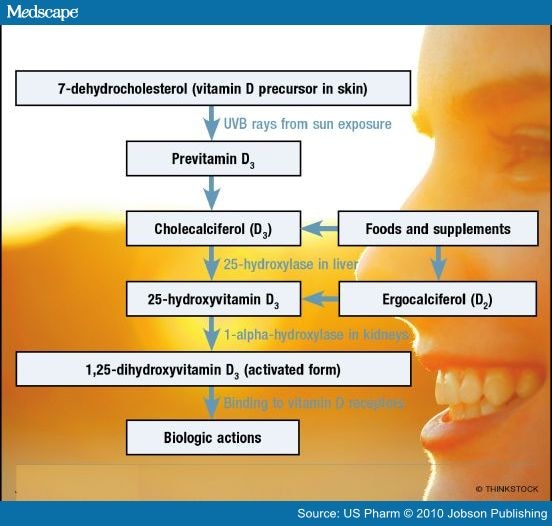Vitamin D is a fat-soluble vitamin that acts as a steroid hormone. The body makes vitamin D from cholesterol through a process triggered by the action of the sun's ultraviolet B rays on the skin (FIGURE 1). Factors such as skin color, age, amount and time of sun exposure, and geographic location affect how much vitamin D the body makes. Vitamin D influences the bones, intestines, immune and cardiovascular systems, pancreas, muscles, brain, and the control of cell cycles.Its primary functions are to maintain normal blood concentrations of calcium and phosphorus and to support bone health.





